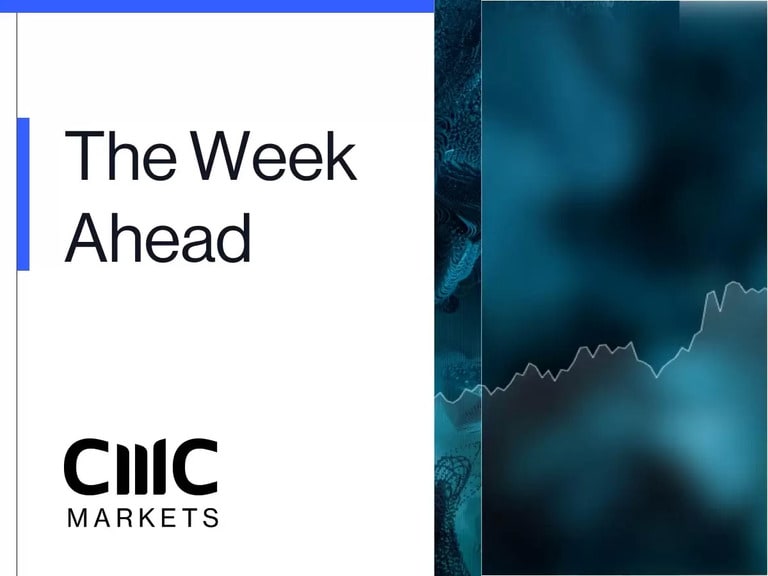The last few weeks has seen equity markets struggle to make gains of any significant size, and all the while concerns have been rising about a number of different factors.
The lack of a clear narrative, whether it be positive or negative, has seen markets churn in both directions since July, with any number of factors raising concerns about the global economic outlook.
Concerns about the regulatory environment in China, soaring energy prices, debates about whether inflation is transitory or persistent, how much the global economy is slowing, and whether central banks can look at tapering their bond buying programs, without sending ripples through the market, is increasingly keeping investors nervous, and that uncertainty appears to be growing.
Last Friday’s move lower in equity markets saw the FTSE100 close below 7,000 for the first time since July, while the S&P500 closed below its 50-day MA for the first time since 18th June. This was coincidentally a triple witching day as well, as was last Friday. Back then the S&P 500 was able to rebound immediately, and consequently achieve new record highs.
One other characteristic of last week's sell-off was a sharp rise in volume with all three major indexes of the DAX, FTSE100 and S&P 500 recording their highest daily volumes since March.
Part of this is likely down to various options expiries, as well as volume flows in the DAX, as it undergoes a big reorientation to 40 constituents, up from 30, starting today.
Nonetheless it is quite clear there is a growing sense of unease about the economic outlook as a growing number of companies look ahead to the prospect of rising costs, and the possible effects on their profit margins, at a time when central banks are coming under pressure to pull back on the generosity of their current stimulus measures.
With that in mind the narrative from this week's Federal Reserve rate meeting is likely to be key in determining whether last week's sell off is an enduring one, or merely temporary. Recent economic data out of the US has been mixed to say the least, but on the labour market there does seem to be cause for optimism.
Unfortunately for the US central bank, that appears to be the least of its problems given the outlook for inflation expectations, which are rising and could well squeeze spending patterns into year end and which have already hammered consumer confidence, along with concern about how economies will cope with the delta variant of Covid-19 as the weather gets colder. These stagflation concerns are now starting to be voiced in ever increasing frequency, with both the Federal Reserve and the Bank of England likely to have to form a view on them when they meet later this week.
One notable by-product of the last few weeks has been seeing UK 2 year and 5-year yields hit their highest levels since March last year. There could be any number of reasons behind this move, including concern about new fiscal rules from the Chancellor, the effect supply chain disruption and rising energy prices will have on the inflation outlook and any steps the Bank of England might take to address these concerns, when they meet on Thursday.
In contrast, the rise in 5-year yields in the US has been much more modest but they have still risen to their highest levels since 2nd July.
With Japan and mainland markets in China closed today, this morning’s Asia session has been a negative one as concerns over the future of Chinese real estate company Evergrande increase further sending the Hang Seng sharply lower. As a consequence today’s European open looks set to be a negative one, with the FTSE100 looking set to open at its lowest levels since 22nd July. The newly formatted DAX is also expected to open lower in a similar fashion.
As we come to the end of the month, it looks increasingly likely that we’ll see the first negative month since January for the S&P500 and the DAX, with the bigger question being have we seen the highs for this year, or is this just another opportunity to buy the dip?
EURUSD – has continued to look weak, breaking below the 1.1750 level we could well head towards the August lows at 1.1660. Any short squeeze needs to stay below last week’s peaks at 1.1845 to keep downside momentum intact.
GBPUSD – slipped below trend line support at the 1.3780 area last week, and have retested the lows this month at 1.3725, calling into question the potential for a return to the 1.3900 area. A move below 1.3720 opens up the risk of a move towards 1.3670 and August lows at 1.3600.
EURGBP – continues to range trade with support down near the 0.8500/10 area, however bias remains for a lower euro, towards 0.8460, while below 0.8560. Above 0.8560 targets the 0.8610 area.
USDJPY – trend line support from the April lows at the 109.20 area held last week. We need to see a break below 109.00 to retarget to the 108.60 area. Resistance now at the 110.20 area.
Disclaimer: CMC Markets is an order execution-only service. The material (whether or not it states any opinions) is for general information purposes only, and does not take into account your personal circumstances or objectives. Nothing in this material is (or should be considered to be) financial, investment or other advice on which reliance should be placed. No opinion given in the material constitutes a recommendation by CMC Markets or the author that any particular investment, security, transaction or investment strategy is suitable for any specific person. The material has not been prepared in accordance with legal requirements designed to promote the independence of investment research. Although we are not specifically prevented from dealing before providing this material, we do not seek to take advantage of the material prior to its dissemination.








